Subdivision of Land in New Zealand: Understanding the Basics
 By
Trent Bradley
·
11 minute read
By
Trent Bradley
·
11 minute read
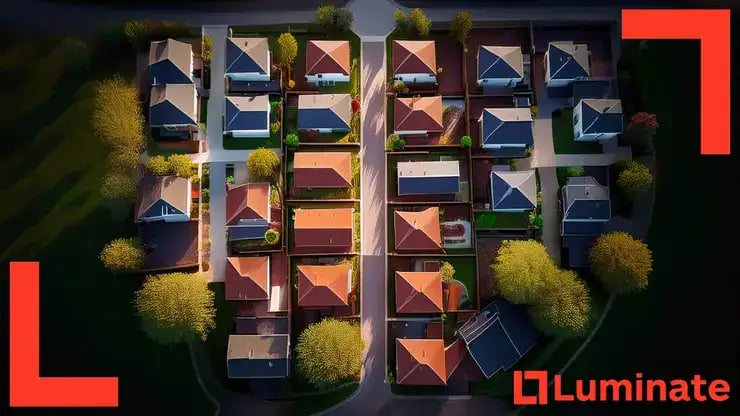
Land subdivision represents one of the most fundamental property development activities in New Zealand, enabling the creation of multiple individual lots from larger properties. Understanding subdivision basics is essential for property owners considering development options and developers seeking to maximize land value through lot creation. This comprehensive guide explores the fundamentals of land subdivision in New Zealand, from basic concepts through practical implementation.
Table of Contents
- What is Land Subdivision?
- Types of Subdivision in New Zealand
- Legal and Regulatory Framework
- Basic Subdivision Process Overview
- Key Players and Professional Requirements
- Site Suitability and Assessment
- Infrastructure Requirements and Standards
- Subdivision Costs and Financial Considerations
- Common Subdivision Challenges
- Subdivision Market Opportunities
- Regional Subdivision Opportunities
- Working with Subdivision Finance Specialists
- Frequently Asked Questions
Key Takeaways
- Land subdivision legally divides a single property into multiple lots with separate certificates of title, enabling independent ownership, sale, and development of each parcel
- Subdivision types range from simple boundary adjustments to major multi-stage developments—minor subdivisions create 2-4 lots while major subdivisions create numerous lots requiring comprehensive infrastructure
- Professional fees for subdivision typically range from $50,000-$200,000+ depending on complexity, with infrastructure development often representing the largest cost component
- Most subdivisions require resource consent under district plan provisions, with processing potentially taking several months to over a year depending on complexity and council efficiency
- Ideal subdivision sites have appropriate zoning, regular configuration, gentle topography, good access, adequate infrastructure capacity, and favorable market demand for resulting lots
- Subdivision development typically takes 1-3 years from initial planning through title creation, requiring 15-20% contingency allowances for unexpected costs
- Infrastructure requirements include road construction to council standards, water supply, wastewater disposal, stormwater management, and utility services—all adding substantial costs but creating serviced development sites commanding premium values
What is Land Subdivision?
Land subdivision is the legal process of dividing a single property into two or more separate lots, each with its own certificate of title enabling independent ownership, sale, and development.
Legal Definition: Under New Zealand law, subdivision involves the division of an allotment into two or more allotments by means of a survey plan that creates new legal boundaries. This definition encompasses various subdivision types from simple boundary adjustments to complex multi-stage developments.
Title Creation Process: Subdivision creates new certificates of title through Land Information New Zealand (LINZ) processes that require detailed survey plans, compliance certificates, and council approvals. New titles provide legal ownership security enabling independent property transactions.
Development Enabler: Subdivision often serves as the foundation for further development by creating appropriately sized lots for housing, commercial buildings, or other development activities. Well-planned subdivision can significantly increase land value through optimized development potential.
Infrastructure Integration: Modern subdivision typically involves infrastructure provision including roads, water supply, wastewater disposal, stormwater management, and utility services. Infrastructure investment creates serviced development sites commanding premium values.
Market Value Creation: Successful subdivision can create substantial value increases by transforming single large properties into multiple smaller parcels that appeal to different market segments and enable varied development approaches.
Types of Subdivision in New Zealand
New Zealand subdivision takes various forms, each with distinct characteristics, requirements, and market applications.
Boundary Adjustments: Simple boundary adjustments between adjacent properties typically represent the simplest subdivision type. These adjustments often don't create additional lots but optimize existing lot configurations for development or ownership purposes.
Minor Subdivisions: Minor subdivisions typically create 2-4 lots from existing properties and may not require significant infrastructure investment. These subdivisions often focus on optimizing development potential while minimizing regulatory complexity and cost.
Major Subdivisions: Major subdivisions create numerous lots and typically require comprehensive infrastructure provision including roads, utilities, and stormwater management. These developments often involve staged implementation over multiple years.
Rural Subdivisions: Rural subdivisions create lifestyle blocks or farming lots in rural areas subject to minimum lot size requirements and rural character protection measures. Rural subdivisions often use private infrastructure systems including on-site wastewater treatment.
Unit Title Subdivisions: Unit title subdivision enables individual ownership of apartments, townhouses, or commercial units within buildings through complex legal structures that separate individual units from common property ownership.
Cross-Lease Subdivisions: Cross-lease arrangements enable shared ownership structures where parties own specific building areas while sharing land ownership. Cross-lease arrangements are less common now but still exist in some residential developments.
Legal and Regulatory Framework
Land subdivision operates within comprehensive legal and regulatory frameworks that control the subdivision process and outcomes.
Resource Management Act: The RMA provides the primary legal framework for subdivision control through territorial authority powers to prepare district plans and process subdivision consent applications. RMA principles emphasize sustainable management and effects-based assessment.
Land Transfer Act: Land transfer legislation governs title creation and registration processes ensuring legal security for property ownership and transactions. LINZ administers land transfer processes according to statutory requirements and professional survey standards.
Local Government Act: Local government legislation enables councils to require infrastructure provision and financial contributions for subdivision development. Council powers include development contribution policies and infrastructure development standards.
Building Act: Building legislation influences subdivision through building consent requirements and building code compliance that affect lot design and development potential. Building legislation ensures public health and safety in development outcomes.
Subdivision Consent Requirements: Most subdivisions require resource consent under district plan provisions. Consent requirements vary depending on lot numbers, sizes, location characteristics, and infrastructure provision needs.
Basic Subdivision Process Overview
Understanding the subdivision process helps property owners and developers plan effectively and manage timeline and cost expectations.
Feasibility and Planning: Initial subdivision planning involves site analysis, market research, concept design development, and preliminary feasibility assessment. Quality planning identifies opportunities while highlighting constraints and cost implications.
Professional Team Assembly: Subdivision requires coordinated professional input including surveyors, planners, engineers, and often lawyers. Professional team quality significantly influences subdivision success and regulatory approval outcomes.
Consent Application: Subdivision consent applications require comprehensive documentation including survey plans, assessment of environmental effects, and technical supporting reports. Application quality affects processing speed and approval success.
Consent Processing: Council consent processing involves technical review, consultation requirements, and decision-making that can take several months to over a year depending on complexity and council efficiency.
Infrastructure Development: Approved subdivisions often require infrastructure construction including roads, utilities, and stormwater systems before title creation can proceed. Infrastructure development typically represents the largest subdivision cost component.
Title Creation: Final title creation requires completed infrastructure, compliance certificates, and LINZ processing that can take several months. New titles enable individual lot sales and development activities.
Key Players and Professional Requirements
Successful subdivision requires coordinated input from various professionals, each with specific expertise essential for regulatory compliance and project success.
Licensed Surveyors: Cadastral surveyors prepare survey plans, manage boundary definition, and coordinate title creation processes with LINZ. Surveyor quality significantly influences subdivision accuracy and regulatory compliance.
Planning Consultants: Planning professionals prepare consent applications, manage regulatory processes, and coordinate with council planners throughout consent processing. Planning expertise often determines consent success and processing efficiency.
Civil Engineers: Engineering professionals design infrastructure systems, prepare construction documentation, and provide construction oversight ensuring regulatory compliance and quality outcomes.
Legal Professionals: Solicitors provide legal advice on subdivision structures, consent conditions, and contractual arrangements while managing legal risks and compliance obligations.
Project Managers: Complex subdivisions benefit from professional project management coordinating various specialists, managing timelines, and ensuring quality outcomes within budget constraints.
Development Finance Specialists: Subdivision finance requires specialist expertise understanding the unique characteristics and risks of subdivision development compared to standard property investment.
Site Suitability and Assessment
Not all properties are suitable for subdivision, requiring careful assessment of physical, regulatory, and market factors that influence subdivision potential.
Physical Site Characteristics: Ideal subdivision sites have appropriate size, regular configuration, gentle topography, good access, and favorable soil conditions. Challenging sites may still be subdividable but at higher cost and complexity.
Zoning and Regulatory Compliance: Sites must have appropriate zoning that enables subdivision with reasonable lot sizes and development potential. Regulatory constraints including minimum lot sizes, setback requirements, and infrastructure standards significantly influence feasibility.
Infrastructure Capacity: Subdivision requires adequate infrastructure capacity including road access, water supply, wastewater disposal, and utility services. Infrastructure constraints may require expensive upgrades or limit subdivision potential.
Market Demand: Subdivision success depends on market demand for the resulting lots considering location, size, price point, and target buyer characteristics. Market analysis should validate demand assumptions and pricing expectations.
Environmental Considerations: Sites with environmental constraints including ecological values, heritage significance, or natural hazards require specialist assessment and may face development restrictions or expensive mitigation requirements.
Access and Connectivity: Subdivision sites require adequate access for the intended number of lots including road frontage, intersection capacity, and internal road requirements. Access constraints can significantly limit subdivision potential.
Infrastructure Requirements and Standards
Modern subdivision typically requires comprehensive infrastructure provision according to council standards that ensure public health, safety, and amenity.
Road Construction: Subdivision roads must meet council construction standards including pavement specification, width requirements, intersection design, and pedestrian facilities. Road construction often represents major subdivision costs.
Water Supply Systems: Subdivision requires adequate water supply including pressure, flow capacity, and water quality meeting public health standards. Rural subdivisions may use private water systems subject to resource consent requirements.
Wastewater Disposal: Urban subdivisions typically connect to council wastewater systems while rural subdivisions may require private treatment systems. Wastewater solutions must meet public health and environmental protection requirements.
Stormwater Management: Modern subdivision requires comprehensive stormwater management including collection, treatment, and disposal systems that protect downstream environments and prevent flooding.
Utility Services: Subdivision typically requires electricity, telecommunications, and sometimes gas services. Utility coordination during subdivision planning ensures efficient service provision and minimizes disruption.
Street Lighting and Signage: Council standards often require street lighting, road signage, and traffic management facilities that contribute to public safety and subdivision accessibility.
Subdivision Costs and Financial Considerations
Understanding subdivision costs helps developers and property owners make informed decisions about subdivision feasibility and financing requirements.
Professional Fees: Subdivision requires substantial professional input including surveying, planning, engineering, and legal services. Professional fees typically range from $50,000-$200,000+ depending on subdivision complexity.
Council Fees and Contributions: Council consent processing fees, development contributions, and infrastructure bonds can add substantial costs. Development contributions help fund community infrastructure and may represent significant subdivision expenses.
Infrastructure Development: Road construction, utility installation, and stormwater systems often represent the largest subdivision cost component ranging from hundreds of thousands to millions of dollars depending on lot numbers and site conditions.
Compliance and Certification: Achieving compliance certificates and final approvals requires ongoing professional input and council inspections throughout infrastructure development.
Holding Costs: Subdivision development typically takes 1-3 years creating holding costs including interest, rates, insurance, and opportunity costs that must be factored into feasibility analysis.
Contingency Requirements: Subdivision projects should include 15-20% contingencies for unexpected costs including site condition variations, regulatory changes, or construction complications.
Common Subdivision Challenges
Understanding typical subdivision challenges helps developers prepare for potential issues and implement effective solutions.
Regulatory Complexity: New Zealand's planning system involves complex rules and processes that require specialist expertise to navigate effectively. Poor regulatory planning can result in consent delays or refusals.
Infrastructure Cost Escalation: Infrastructure costs can exceed estimates due to site conditions, specification changes, or market factors. Cost escalation can significantly impact subdivision profitability requiring careful cost management.
Council Processing Delays: Consent processing delays can extend subdivision timelines creating additional holding costs and potentially affecting market timing. Maintaining positive council relationships helps minimize processing delays.
Market Timing Issues: Subdivision development periods expose projects to market cycles and demand changes. Market downturns during development can affect lot sales and pricing requiring flexible marketing strategies.
Neighbor and Community Opposition: Subdivision proposals may face neighbor opposition or community concerns requiring careful stakeholder management and sometimes design modifications.
Technical Site Issues: Unexpected site conditions including contamination, archaeological sites, or geotechnical problems can create additional costs and delays requiring expert assessment and mitigation.
Subdivision Market Opportunities
Different subdivision types serve various market segments creating diverse investment opportunities across New Zealand's regions.
Urban Infill Subdivision: Urban areas with housing shortages provide opportunities for infill subdivision creating additional residential lots in established neighborhoods. These subdivisions often command premium prices due to location advantages.
Lifestyle Block Creation: Rural-residential subdivision creates lifestyle blocks appealing to buyers seeking space and rural character while maintaining urban accessibility. Lifestyle subdivisions often target affluent buyers seeking property investment and lifestyle benefits.
Master-Planned Communities: Large-scale subdivisions can create comprehensive communities with varied housing options, recreational facilities, and commercial services. These developments require substantial investment but can generate significant returns over extended periods.
Commercial and Industrial Subdivision: Business areas provide opportunities for commercial and industrial subdivision creating smaller, more affordable business sites. Commercial subdivision often provides steady returns with lower development complexity.
Holiday and Tourism Subdivision: Tourist areas may provide opportunities for holiday home subdivision though these markets can be volatile and subject to regulatory restrictions in some locations.
Regional Subdivision Opportunities
Subdivision opportunities vary across New Zealand's regions based on growth patterns, regulatory environments, and market conditions.
Auckland Subdivision: New Zealand's largest city provides diverse subdivision opportunities from urban infill to rural-residential development. High land values support subdivision investment despite complex regulatory requirements.
Provincial Growth Centers: Cities like Hamilton, Tauranga, and Christchurch provide subdivision opportunities with lower land costs and often more streamlined regulatory processes compared to Auckland.
Lifestyle Markets: Regions within commuting distance of major cities provide lifestyle subdivision opportunities serving buyers seeking rural character with urban accessibility.
Tourism and Recreation Areas: Areas like Queenstown, Rotorua, and coastal regions may provide subdivision opportunities though these markets can be volatile and face regulatory constraints.
Rural Production Areas: Some rural areas provide subdivision opportunities though these face restrictions designed to protect productive agricultural land and rural character.
Working with Subdivision Finance Specialists
Subdivision development requires specialist financing understanding the unique characteristics, risks, and opportunities of subdivision projects.
At Luminate Finance, we specialize in subdivision finance and work closely with developers to assess subdivision opportunities, structure appropriate financing, and provide ongoing support throughout subdivision development.
Our extensive experience across diverse subdivision types and regional markets provides valuable insights into subdivision feasibility, market positioning, and development optimization that supports successful project outcomes.
We understand the specific financing requirements of subdivision development including staged funding needs, infrastructure development costs, and market absorption patterns that differ significantly from other property development types.
Our comprehensive approach includes feasibility review, financing structure optimization, and ongoing project support that helps developers navigate subdivision complexity while achieving optimal financial outcomes.
Through our involvement in numerous subdivision projects across New Zealand, we've developed deep understanding of subdivision success factors and can provide valuable guidance throughout the development process.
Our network of professional relationships includes experienced surveyors, planners, engineers, and consultants who provide additional expertise and support for subdivision development success.
Frequently Asked Questions
What is the legal definition of subdivision in New Zealand?
Under New Zealand law, subdivision involves the division of an allotment into two or more allotments by means of a survey plan that creates new legal boundaries. The process creates new certificates of title through Land Information New Zealand (LINZ) requiring detailed survey plans, compliance certificates, and council approvals. Subdivision is governed primarily by the Resource Management Act, which provides territorial authorities with powers to control subdivision through district plans and consent processes. The definition encompasses various subdivision types from simple boundary adjustments to complex multi-stage developments creating dozens of lots.
What are the main types of subdivision available in New Zealand?
The main subdivision types include: boundary adjustments (simple reconfigurations between adjacent properties), minor subdivisions (creating 2-4 lots without significant infrastructure), major subdivisions (creating numerous lots requiring comprehensive infrastructure), rural subdivisions (creating lifestyle blocks with minimum lot sizes), unit title subdivisions (individual ownership of apartments or townhouses within buildings), and cross-lease subdivisions (shared ownership structures). Each type has distinct characteristics, requirements, and market applications. Minor subdivisions typically have lower regulatory complexity while major subdivisions require staged implementation over multiple years.
What professionals do I need for a subdivision project?
Successful subdivision requires coordinated input from licensed cadastral surveyors (who prepare survey plans and manage title creation), planning consultants (who prepare consent applications and manage regulatory processes), civil engineers (who design infrastructure systems and provide construction oversight), legal professionals (who provide advice on subdivision structures and manage compliance), and often project managers for complex subdivisions. For larger projects, development finance specialists provide expertise understanding unique subdivision financing characteristics. The quality of your professional team significantly influences subdivision success, regulatory approval outcomes, and processing efficiency.
How long does the subdivision process typically take?
Subdivision development typically takes 1-3 years from initial planning through title creation. The timeline includes feasibility and planning (several weeks to months), consent application preparation (1-3 months), council consent processing (several months to over a year depending on complexity), infrastructure development (6-18+ months depending on scope), and final title creation through LINZ (several months). Council processing times vary significantly based on subdivision complexity, application quality, and council efficiency. Complex subdivisions or those facing opposition may take considerably longer, while simple boundary adjustments might be completed within 6-12 months.
What are the main costs involved in subdivision?
Major subdivision costs include professional fees ($50,000-$200,000+ for surveying, planning, engineering, and legal services), council fees and development contributions (varying by council and lot numbers), infrastructure development (often the largest component, ranging from hundreds of thousands to millions for roads, utilities, and stormwater systems), compliance and certification costs, and holding costs including interest, rates, and insurance over the 1-3 year development period. Projects should include 15-20% contingency allowances for unexpected costs from site condition variations, regulatory changes, or construction complications. Development contributions help fund community infrastructure and may represent significant expenses.
What makes a property suitable for subdivision?
Suitable subdivision sites have appropriate zoning enabling subdivision with reasonable lot sizes, adequate physical size and regular configuration, gentle topography and favorable soil conditions, good road access and infrastructure capacity (water supply, wastewater disposal, utilities), market demand for resulting lots, and minimal environmental constraints. Sites must comply with district plan provisions including minimum lot sizes, setback requirements, and infrastructure standards. Challenging sites with steep slopes, poor access, or environmental constraints may still be subdividable but at higher cost and complexity. Market analysis should validate demand assumptions and pricing expectations for the intended lot sizes and location.
What infrastructure must be provided for subdivision?
Modern subdivision typically requires roads meeting council construction standards (pavement specification, width, intersection design, pedestrian facilities), water supply systems with adequate pressure and flow capacity, wastewater disposal (urban subdivisions connect to council systems; rural subdivisions may use private treatment), comprehensive stormwater management (collection, treatment, disposal systems), utility services (electricity, telecommunications, sometimes gas), and street lighting and signage. All infrastructure must meet council standards ensuring public health, safety, and amenity. Infrastructure investment creates serviced development sites commanding premium values but often represents the largest subdivision cost component—sometimes millions of dollars for major subdivisions.
What are common challenges in subdivision projects?
Common subdivision challenges include regulatory complexity requiring specialist expertise to navigate New Zealand's planning system effectively, infrastructure cost escalation exceeding estimates due to site conditions or market factors, council processing delays extending timelines and creating additional holding costs, market timing issues from exposure to demand changes during the 1-3 year development period, neighbor and community opposition requiring careful stakeholder management, and unexpected technical site issues including contamination, archaeological sites, or geotechnical problems requiring expert assessment and mitigation. Poor regulatory planning can result in consent delays or refusals, while cost escalation can significantly impact profitability requiring careful cost management throughout the project.
Ready to explore subdivision opportunities with specialist finance support? Contact Luminate Finance today to discuss how our subdivision expertise and tailored financing solutions can support your subdivision development success from concept through completed subdivision.

Trent Bradley
Trent Bradley is a New Zealand financial advisor specializing in property-backed finance and investment consulting. With over 26 years of experience running his mortgage broking business, he has helped wholesale investors access high-yield property-backed loan opportunities. For the past 12 years, Trent has led Luminate Finance, a New Zealand finance company dedicated to connecting investors with secure property investment solutions.






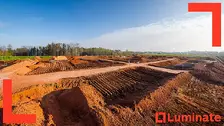



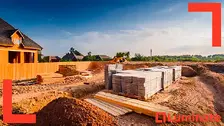








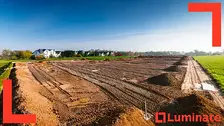







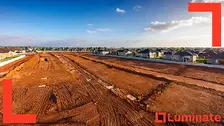

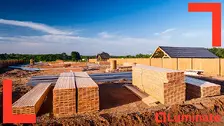



.png?//48413319.fs1.hubspotusercontent-ap1.net/hubfs/48413319/Featured%20images%20(14).png&width=247&height=126&name=Featured%20images%20(14).png)




